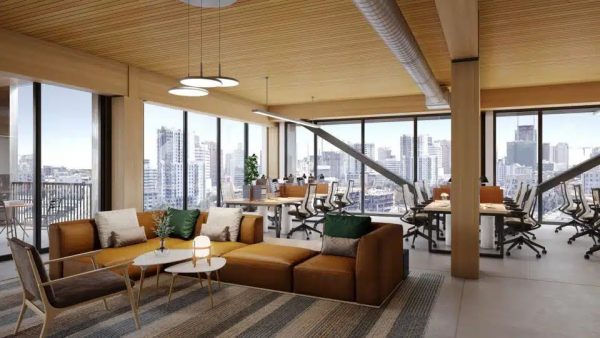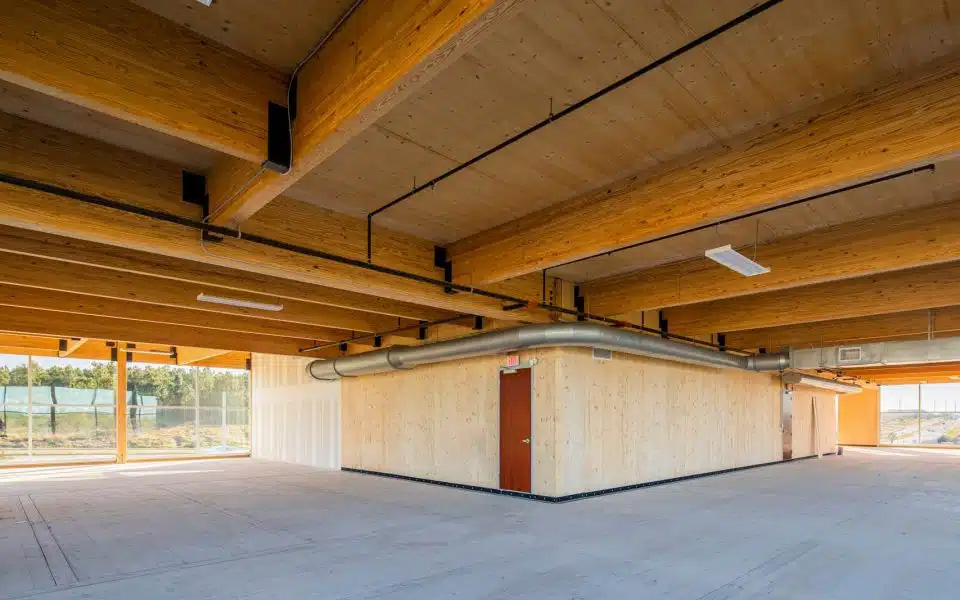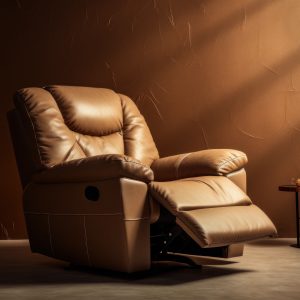Mass timber — primed for wider use?
Despite obstacles, the innovative building material is used in a growing number of projects.
An engineered laminated wood product developed in Europe is gaining popularity among some architects and builders as a renewable resource that can rival concrete and steel in strength.
Even the University of Florida may be getting into the act. The School of Forest, Fisheries, & Geomatics Sciences is leading a project to construct a campus building with mass timber — potentially the latest in a wave of mass timber structures being built at institutes of higher education.
Cross-laminated timber (CLT), the most widely used material in mass timber buildings, is being touted its environmental and aesthetic appeal, and as a modular construction technique that allows for the quick assembly of factory-built large wood beams and other load-bearing panels at a building site.
As of September 2022, more than 1,500 multifamily, commercial and institutional mass timber projects had been constructed or were in design across all 50 states, an increase of over 25% from the previous year, according to WoodWorks, a mass timber trade association. Walmart, Google and Microsoft are among the companies that are building with mass timber.
Florida a potential source for wood

An artist’s rendering of the interior of Hines’ building in Fort Lauderdale, which the company said is the first of several mass timber buildings it is considering in Florida.
While not exactly a hotbed for mass timber projects, the Sunshine State shows promise: 28 mass timber buildings are either built or under construction across the state — including an office building Clermont, a residence in Miami built by architects who specialize in mass timber, and a project in Fort Lauderdale developed by Hines, a major real estate developer and among the nation’s most active mass timber builders. Florida and other Southeastern states have extensive acreage of Southern yellow pine timberlands suitable to produce wood for mass timber projects, experts said. Florida has 14.9 million acres of publicly and privately owned timberland, which are lands potentially available for the growth and harvest of trees for commercial purposes.
At UF, a proposed $80 million Integrated Natural Resources building would bring together three academic natural resource programs and related centers scattered across campus, said Scott Sager, an assistant director and forester in the School of Forest, Fisheries, & Geomatics Sciences.
It appears cost is not the primary driver for institutions of higher education, which have increasingly embraced mass timber, particularly for use in natural resource learning spaces where scholars focus on the renewable aspects of wood. Mass timber-made buildings have popped up on numerous campuses, ranging from North Carolina State’s Plant Science Building to Oregon State’s Oregon Forest Science Complex, a teaching and collaborative-learning space in Corvallis, Oregon.
Sager said mass timber is an ideal material to house academic programs devoted to natural resource research and development. “It is fitting to create a teaching tool that is made of an environmentally sustainable product that grows back and produces clean water and air while storing carbon dioxide,” he said.
Mass timber projects face an array of obstacles, including limited supply of mass timber products in many parts of the country, questions over its fire resistance and the slow adoption of mass timber in local building codes.
Despite the challenges, developers are moving forward with projects. Perhaps the first mass timber house in Florida was completed in January 2022 in Miami’s Coconut Grove neighborhood by architects Chris and Shawna Meyers, both of whom teach at the University of Miami School of Architecture. Dubbed House in a Garden, the Meyers built the single story, 1,800-square-foot home to highlight wood’s natural beauty — what mass timber advocates call “biophilic feel.” The home uses CLT manufactured with Florida-sourced Southern yellow pine.
The Meyers have been hired to scope out the proposed UF’s mass timber building. A UF team recently received a $500,000 grant from the U.S. Forest Service to, among other things, refine the project and compare the environmental impacts of using mass timber versus traditional construction techniques.




